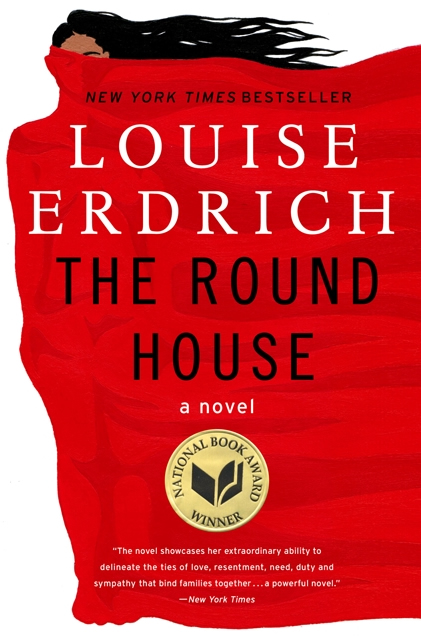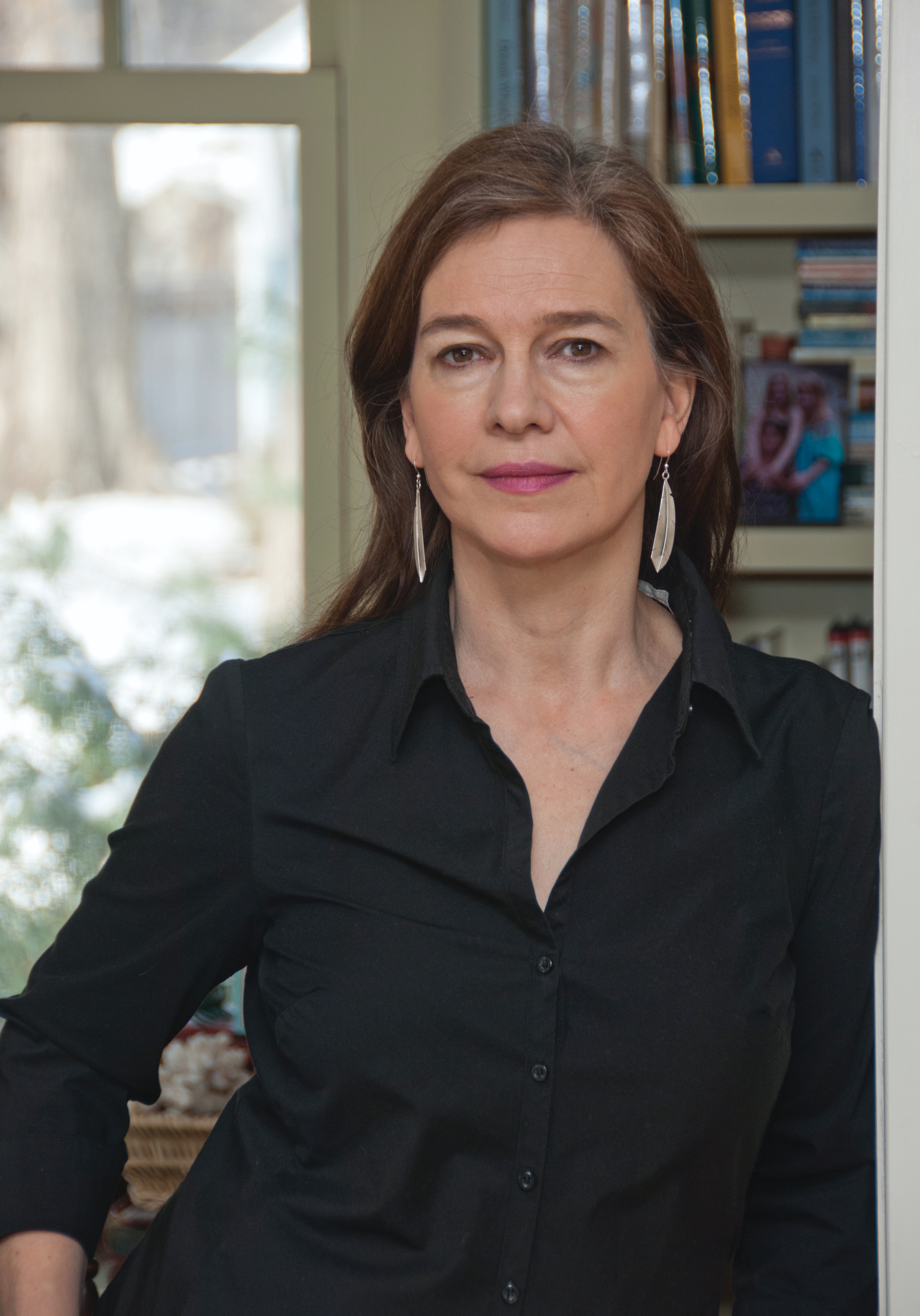The Round House

Overview
Award-winning author and Minnesota bookstore owner Louise Erdrich hails from North Dakota and is a member of the Turtle Mountain Band of Chippewa Indians. "While Erdrich is known as a brilliant chronicler of the American Indian experience," writes Reader's Digest, "her insights into our family, community, and spiritual lives transcend any category." Erdrich's 14th novel, The Round House (Harper, 2012), tells the suspenseful tale of a 13-year-old boy's investigation and desire for revenge following a brutal attack on his mother that leaves his father, a tribal judge, helpless in his pursuit to bring the perpetrator to justice. "Erdrich threads a gripping mystery and multilayered portrait of a community through a deeply affecting coming-of-age novel" (O, The Oprah Magazine). "A preeminent tale in an essential American saga" (Booklist, starred review). "This novel will have you reading at warp speed to see what happens next" (Star Tribune).
"Always I kept going back to the day I dug the trees out of the foundation of our house. How tough those roots had clung." —from The Round House
Introduction
"If our hearts are on the ground, our country has failed us all. If we are safe, our country is safer." — Louise Erdrich in The New York Times
Joe Coutts is 13 years old in 1988, living a carefree life on the Ojibwe reservation in North Dakota, when his family is shattered by a brutal attack against his mother that leaves her a shell of her former self. In the weeks following the attack, his mother mostly refuses to eat and won't leave her bedroom. Joe and his father, a tribal judge, don't know how to help her recover, nor can Joe's father untangle the web of jurisdictional legalities to bring the perpetrator to justice. As Joe, now older, looks back on that time of anger and confusion, we come to understand how a young boy might view the events and decide to take matters into his own hands. Louise Erdrich's novel The Round House (Harper, 2012) "opens out to become a detective story and a coming-of-age story, a story about how Joe is initiated into the sadnesses and disillusionments of grown-up life and the somber realities of his people's history" (The New York Times).
Joe and his father, Bazil, know that the question of who committed the savage act against his mother, Geraldine, is as important to solving the mystery and taking action as the question of where the violence took place. Joe suspects a non-Native man is to blame for the crime, and that he took Geraldine (a Native American) somewhere near the sacred ceremonial structure that gives the novel its title. As Erdrich explains in an afterword, tribal governments have been prohibited since 1978 from prosecuting non-Natives who commit crimes on their land. That is, until 2013—one year after The Round House was published—when, after several years of being blocked in Congress, the Violence Against Women Act was effectively reauthorized.
"The Justice Department reports that one in three Native women is raped over her lifetime, while other sources report that many Native women are too demoralized to report rape," wrote Erdrich in a 2013 editorial for The New York Times. More than 80 percent of sex crimes on reservations, she added, are committed by non-Native men. With tribal courts unable to prosecute these cases and because "federal prosecutors decline to prosecute 67 percent of sexual abuse cases, according to the Government Accountability Office," she wrote, it has been reported that non-Native habitual sexual predators are particularly attracted to tribal areas. "A growing number of Native American women wear red shawls to powwows to honor survivors of sexual violence. The shawls, a traditional symbol of nurturing, flow toward the earth. The women seem cloaked in blood." Erdrich told BookPage she had wanted to write about this subject for a long time, but didn't know how to approach it. "I didn't want to write a polemical piece. Every time I'd talk about the novel, I'd say it's about jurisdiction and—YAWN, people's eyes would glaze over. I thought, I have to find a way to tell this story that doesn't make them completely lose consciousness." The character of Joe, she told the National Book Foundation, was "a writer's gift." When he "started talking, I knew I had been waiting for him."
As Joe's parents fall deeper into despair, Joe begins to spend more time with his Uncle Whitey and Whitey's wife, Sonja. He feels compelled to investigate his mother's attack on his own, riding his bike to the crime scene and peeping in on suspicious characters, including Father Travis, the local priest and Iraq War veteran. But Joe is still a kid who sneaks a beer, goofs off with his friends, watches Star Trek, has crushes on girls, and feeds off the kindness and support of his amusing older relatives. He wishes he could turn back the clock to when his mother made delicious dinners and laughed so loud she snorted. "I know boys of that age who really hide their tenderness for their mothers, and I wanted to write something about that because it's so mysterious: that simultaneous feeling of wanting to break away and wanting to protect them," said Erdrich (BookPage).
Winner of the National Book Award for Fiction, The Round House is the second book of a trilogy sometimes referred to as Erdrich's justice trilogy. The first novel, The Plague of Doves (HarperCollins, 2008) won the Anisfield-Wolf Book Award and was a finalist for the Pulitzer Prize. It follows the reverberations of a lynching near the Ojibwe reservation in 1911. In her third book, LaRose (Harper, 2016) a deer hunter accidentally shoots a five-year-old boy and, consumed by guilt, offers his own son to the grieving parents. Each book in the cycle explores the reverberations from a single act of violence. "I knew I was working on the subject of justice when I wrote the first book, and then I realized I had to write about jurisdictional issues for the second book," Erdrich told The Rumpus. "I understood that I had to continue this theme [of justice]." But as important, Erdrich told PBS Newshour, is the theme of the "resilience of the culture."
- Though he is older as he narrates the story, Joe is just thirteen when the events of the novel take place. What is the significance of his age? How does that impact his actions and reactions? How would the story be different if it was told in present tense rather than in retrospect?
- Joe's whole family is rocked by the attack on his mother. How does it affect the relationship between his mother and father, and between him and his mother and him and his father? Does it alter Joe's view of them? How does it transform his family?
- “My mother's job was to know everybody's secrets,” Joe tells us. How does this knowledge empower Geraldine and how does it make her life more difficult?
- Can trauma force a child to “grow up” quickly? Grow up how?
- Joe is inseparable from his three friends, especially his best friend, Cappy. How would you describe the bond between them? How does their closeness influence unfolding events?
- What is the significance of the round house? What is the importance of animals, nature, spirituality, and the Obijwe legends that are scattered through the novel? How do these aspects reflect and deepen the main story? What can we learn from the ways of people like the Ojibwe?
- After the attack, Joe's mother, Geraldine, isn't sure exactly where it happened, whether it was technically on Reservation land or not. How does the legal relationship between the U.S. and the Ojibwe complicate the investigation? Why can't she lie to make it easier?
- Secondary characters, including Mooshum, Linda Wishkob, Sonja, Whitey, Clemence, and Father Travis, play indelible roles in the central story. What do their stories and interactions with the main characters tell us about the wider world of the reservation and about relations between white and Native Americans?
- Towards the novel's climax, Father Travis tells Joe, “in order to purify yourself, you have to understand yourself. Everything out in the world is also in you. Good, bad, evil, perfection, death, everything. So we study our souls.” Would you say this is a good characterization of humanity? How is each of these things visible in Joe's personality?
- When Joe makes his fateful decision concerning his mother's attacker, he says it is about justice, not vengeance. What do you think? How does that decision change him? Why doesn't he share the information he has with the people who love him?
- How would you describe the various prejudices that play out in the story, including prejudices against Native Americans? How do they compare to current-day prejudices?
- “My father remembered that of course an Ojibwe person's clan meant everything at one time, and no one didn't have a clan; thus, you know your place in the world and your relationship to all other beings.” Has modernity transformed this idea of family and community?
- The Round House begins and ends with the metaphor of trees spreading out their roots and attacking the foundation of Joe's house. Are there other metaphors in the novel that similarly reflect Joe's story and/or the story of the Native American people?
- “The only thing that God can do, and does all the time, is to draw good from any evil situation,” Father Travis advised Joe. What good does Joe—and also his family—draw from the events of the summer of 1988? What life lessons did Joe learn?
- Erdrich explains in an afterword that tribal governments have been prohibited since 1978 from prosecuting non-Natives who commit crimes on their land. In 2013, however—one year after The Round House was published—the Violence Against Women Act was effectively reauthorized after several years of being blocked in Congress, eliminating this prohibition. In what ways can works of fiction help influence reality? Can you think of other examples where this has occurred?
Source material for The Round House discussion questions provided courtesy of HarperCollins.


